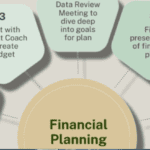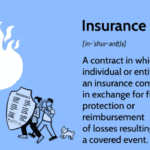Task Planning Strategies to Maximize Your Savings
Saving money isn’t just about cutting expenses—it’s also about strategic planning and efficient task management. By organizing your tasks effectively, you can minimize unnecessary spending, avoid impulse purchases, and make the most of your financial resources. Here’s how you can use task-planning strategies to maximize your savings.
1. Set Clear Financial Goals
Before planning your tasks, define what you’re saving for. Whether it’s an emergency fund, a vacation, a home, or retirement, having a specific goal will keep you motivated and focused.
Action Steps:
-
Set SMART goals (Specific, Measurable, Achievable, Relevant, Time-bound).
-
Break down large savings goals into monthly or weekly targets.
-
Use budgeting apps or a spreadsheet to track progress.
2. Prioritize Essential Tasks & Expenses
One of the biggest ways people overspend is by not distinguishing between needs and wants. Organizing your tasks based on priority helps you focus on essentials first before spending on non-essentials.
Action Steps:
-
Categorize expenses into necessities (rent, groceries, utilities) and luxuries (entertainment, dining out).
-
Plan grocery shopping and bill payments first before leisure activities.
-
Use the 50/30/20 rule (50% needs, 30% wants, 20% savings).
3. Create a Weekly or Monthly Budget Plan
A well-planned budget helps control spending, prevents last-minute splurges, and ensures money is allocated wisely.
Action Steps:
-
Plan your budget at the start of each month.
-
Assign spending limits to different categories.
-
Track expenses daily or weekly using a finance tracker.
-
Review your budget monthly to adjust for changes.
4. Automate Savings & Bill Payments
By automating your financial tasks, you eliminate the risk of forgetting to save or overspending before saving.
Action Steps:
-
Set up automatic transfers to your savings account on payday.
-
Automate bill payments to avoid late fees.
-
Use financial apps to round up purchases and deposit the difference into savings.
5. Plan Purchases & Avoid Impulse Buying
Impulse purchases can drain your budget without you realizing it. Task planning can help prevent unnecessary spending.
Action Steps:
-
Make a shopping list before going to the store.
-
Use the 24-hour rule: Wait a day before making non-essential purchases.
-
Compare prices and look for discounts before buying big-ticket items.
-
Plan major purchases during sales events and discount periods.
6. Batch Tasks to Save Time & Money
Grouping similar tasks together reduces time wastage and extra expenses.
Action Steps:
-
Meal prep in advance to reduce dining out expenses.
-
Schedule errands together to save on fuel and transport costs.
-
Buy groceries in bulk to take advantage of discounts.
-
Limit online shopping sessions to reduce impulse spending.
7. Plan for Unexpected Expenses
Life is unpredictable, and emergency expenses can quickly derail savings. Having a proactive plan helps maintain financial stability.
Action Steps:
-
Set up an emergency fund with at least 3-6 months of expenses.
-
Budget a small amount each month for unexpected costs.
-
Review insurance policies to ensure adequate coverage.
8. Monitor & Adjust Your Plan Regularly
Even the best task-planning strategies need adjustments. Reviewing your progress ensures you stay on track and continue improving.
Action Steps on Planning Strategies
-
Check your budget weekly to ensure you’re on target.
-
Adjust spending limits based on changing needs.
-
Celebrate milestones to stay motivated in your savings journey.
Final Thoughts on Planning Strategies
Effective task planning and Planning Strategies is a powerful tool for maximizing your savings. By setting goals, budgeting wisely, automating finances, and avoiding impulse spending, you can build a strong financial future.




